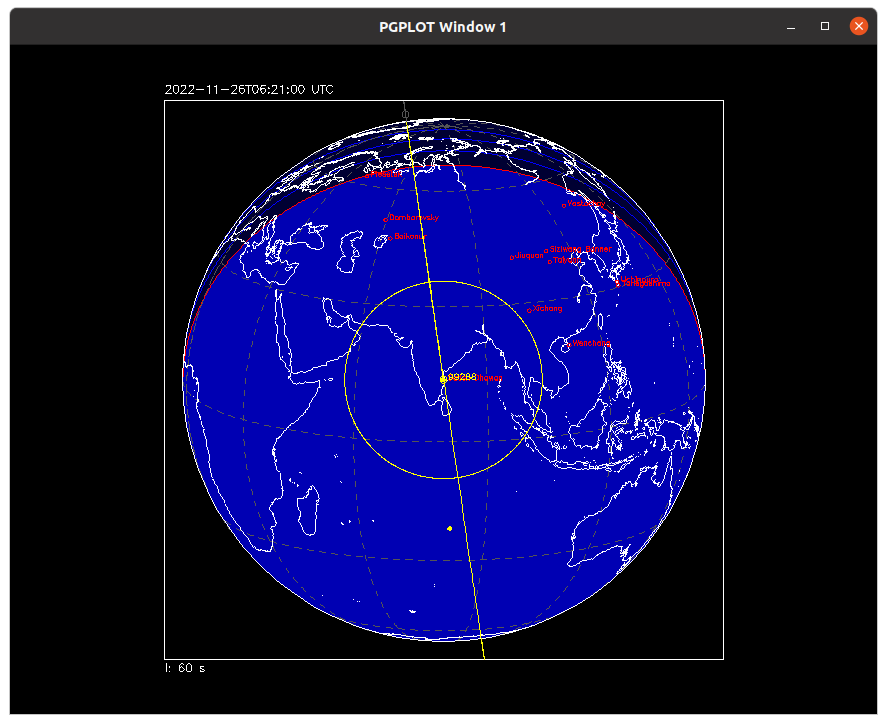After suggestion of @cgbsat to not use the launch direction but use an inclination of 98 degrees I got TLE:
EDIT: This TLE is not good. It is north bound, should be South bound.
1 99288U 22330.26458333 .00000000 00000-0 50000-4 0 02
2 99288 98.0000 242.5000 0001452 0.0000 14.0000 15.18227275 05
Using command:
faketle -i 99288 -q 510.202 -Q 512.202 -I 98 -n 242.5 -m 14 -t 2022-11-26T06:16:00 -d 300 > isro.tle
I have adjusted the -n and -m parameters to bring the satellite above the launch site 5 minutes after launch. The location is checked using:
satorbit -t 2022-11-26T06:21:00 -i 99288 -c isro.tle -B 13.7199 -L 80.2304 -q
Gives:
I hope this will work out!
I have used this guide to produce the TLE:
2020-11-14_FakeTLE_guide.md
# TLE Estimation for an Upcoming Rocket Launch
* Date: 2020-11-15
* Author: Mark Jessop <vk5qi@rfhead.net>
Scenario: RocketLab are launching 30 small-sats into space in a few days. We know that one of them is going to be transmitting on the amateur radio bands, but we haven't been able to obtain a pre-launch TLE yet. We want to get setup to use [strf](https://github.com/cbassa/strf) to listen for beacon signals (see my guide [here](https://gist.github.com/darksidelemm/861cef5e35d5679684932666d4de8ad2)), but we need to know when to expect the satellites. We have some basic orbital information from a press release, so how can we use this to estimate a TLE for prediction purposes?
Note: I am approaching this from the point-of-view of someone who really don't know much about orbital mechanics. I'm relying heavily on the experience of others, and the content below is my attempt at documenting the process taken.
Thanks to Cees Bassa for the amazing software as always...
show original
1 Like
